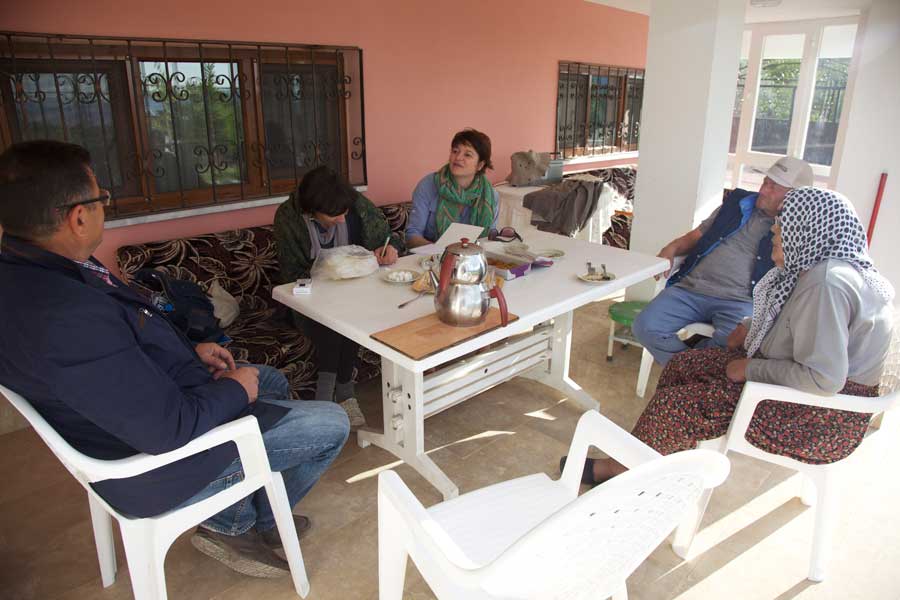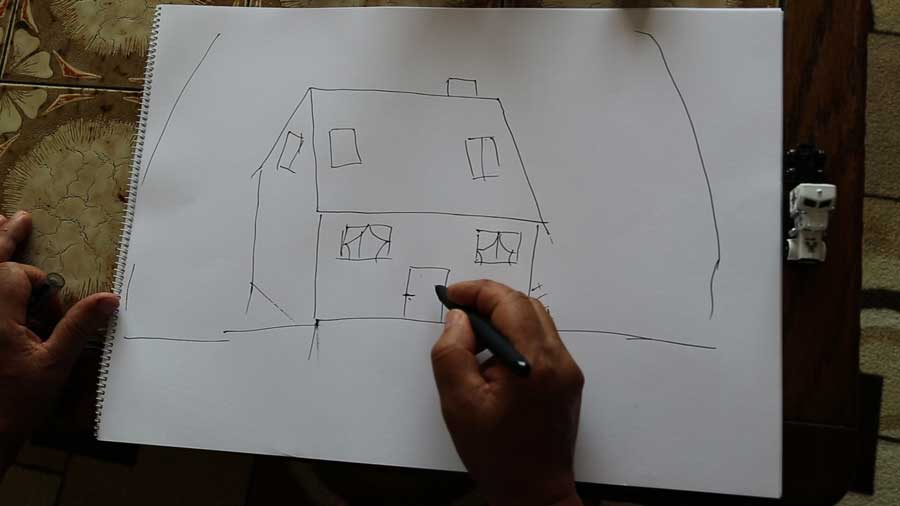Semi-structured Interviews

Semi-structured interviews were carried out with returned migrants in their spaces. To do this, we interviewed Turkish house and apartment owners who had previously lived in Germany in various regions of Turkey and analysed their environment with regard to spatial organisation and symbolic representation. The house as an object of research as well as a demonstrative object with a representative function and intimate living space for the interviewee allowed data regarding the spatial context in the interior, such as the daily frequency of room use, objects or personal relationships to rooms (in interviews with more than one person, usually the wife) to be collected. Abb. 5 The aspect of relationships to rooms was the basis for achieving a maximum result in the depth dimension, because the interviewer took on the role of a visitor (Heinze 2001, 156f.; Flick 2010, 149).
Data collection and analysis process
The selection criteria for the interviewees was as follows:
1. The interviewees had spent a relatively long period living in Germany as first or second generation Turkish migrants. They were born in Turkey or they were children of Turkish migrants in Germany born in Germany or Turkey, but had spent a shorter or longer period of their socialisation in Turkey.
2. The interviewees had built their own house in Turkey or owned a house or apartment they had significantly renovated, redecorated or redesigned.
3. The interviewees had built or decorated their house or apartment according to their own vision, ideas and wishes, either personally or by third parties hired directly by them.
4. The interviewees were not architects, construction engineers or interior designers.
During the eight research trips, 132 returned migrants’ houses or apartments were documented using photography or video. A total of 96 properties were confirmed and identified either personally or by third parties as the property of returned migrants. We carried out qualitative, semi-structured interviews with 37 property owners, 23 house owners and 14 apartment owners. 51 per cent of our interviewees and house builders were 60 to 85 years old and belong to the first generation of Turkish migrant workers. 25 per cent were 50 to 60 years old. These members of what is known as the second generation were often born in Turkey and grew up with their grandparents, while their parents were already working in Germany. 24 per cent were between 20 and 50 years old. They were, almost without exception, born in Germany and also second generation. There were fewer house builders than apartment owners in this group. 73 per cent of the interviewees were men and 27 per cent women.

We were able to take photos or video of the both interiors and exteriors, such as gardens, grounds, facade and the surrounding houses in the neighbourhood, of the houses and their land or the apartments.
Last View
The art and research project is funded by
